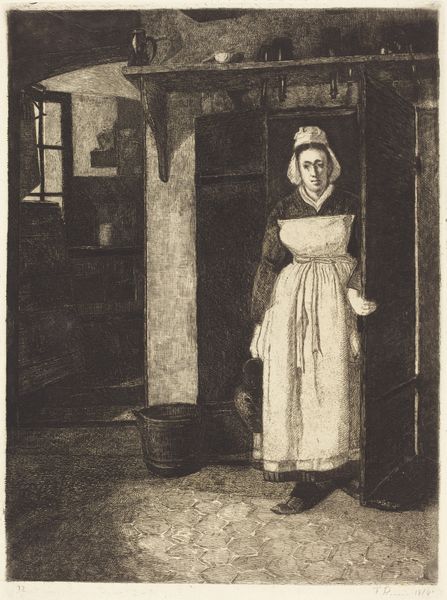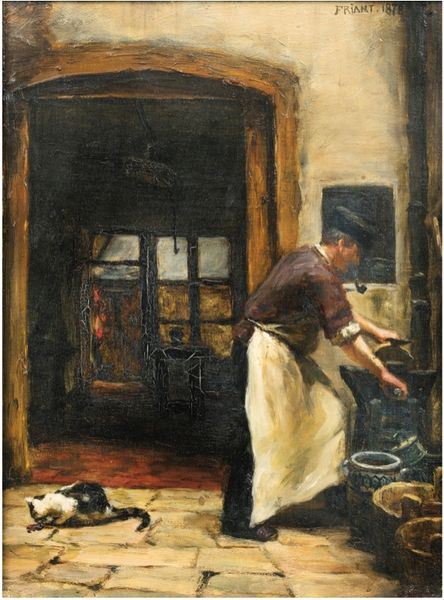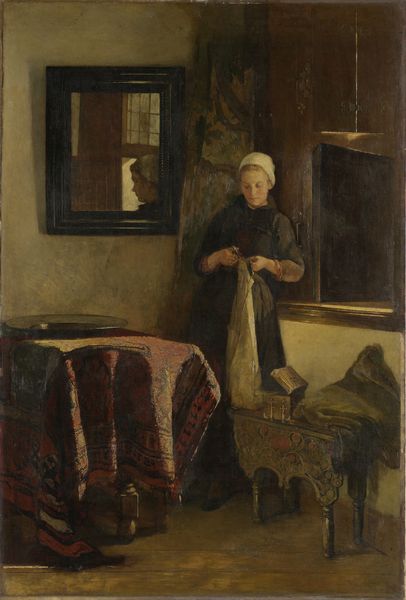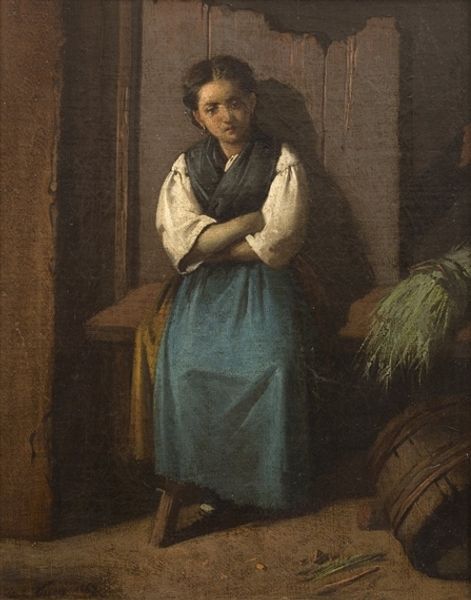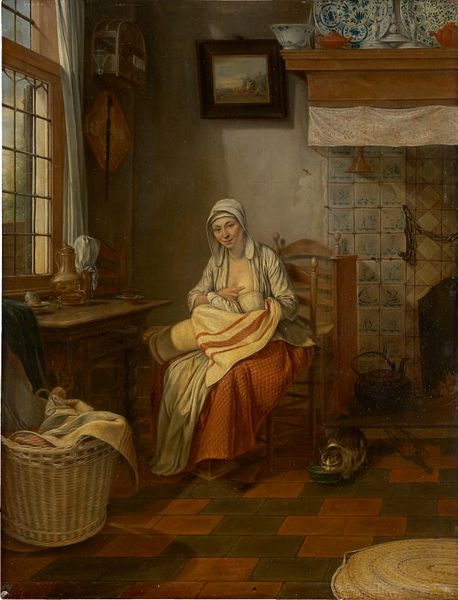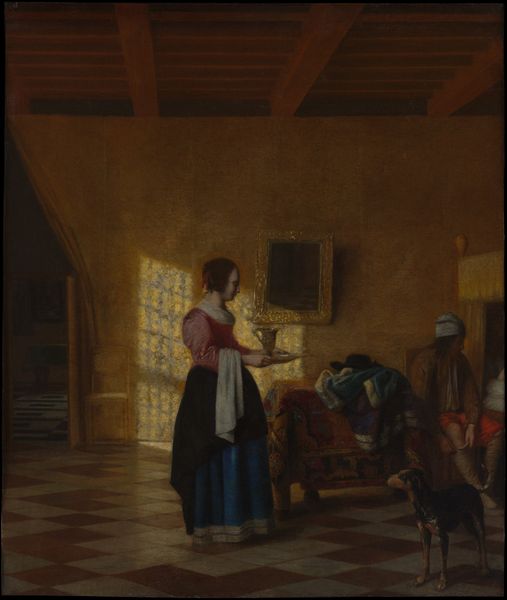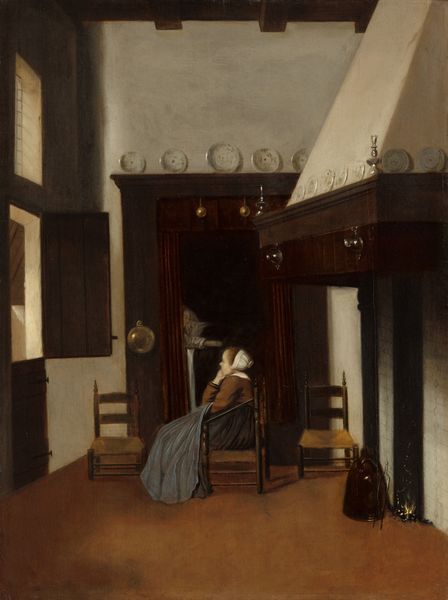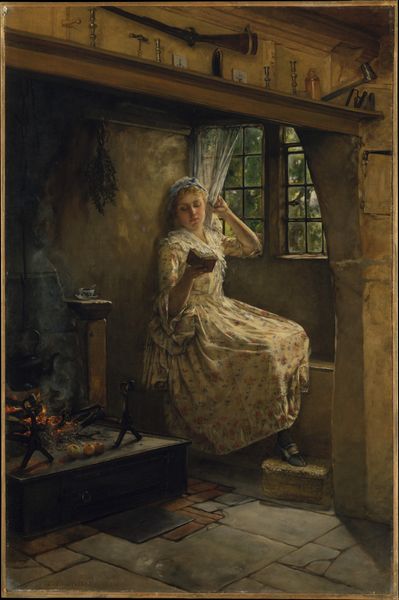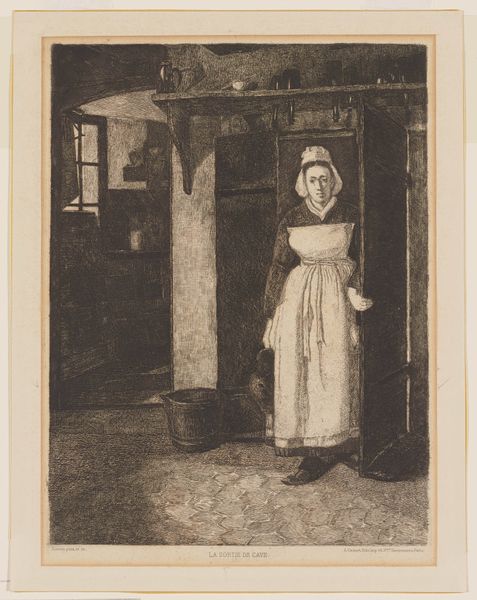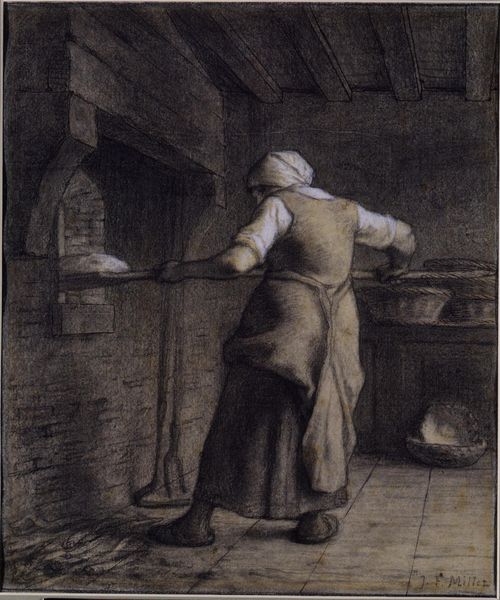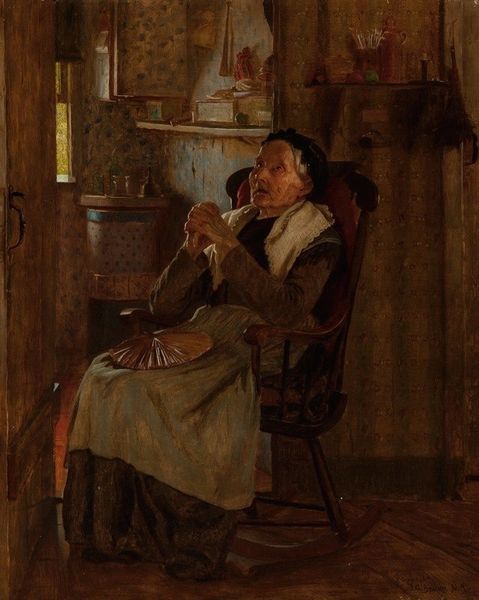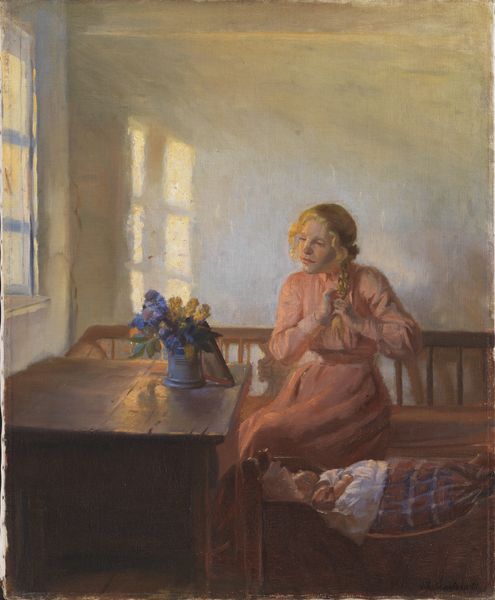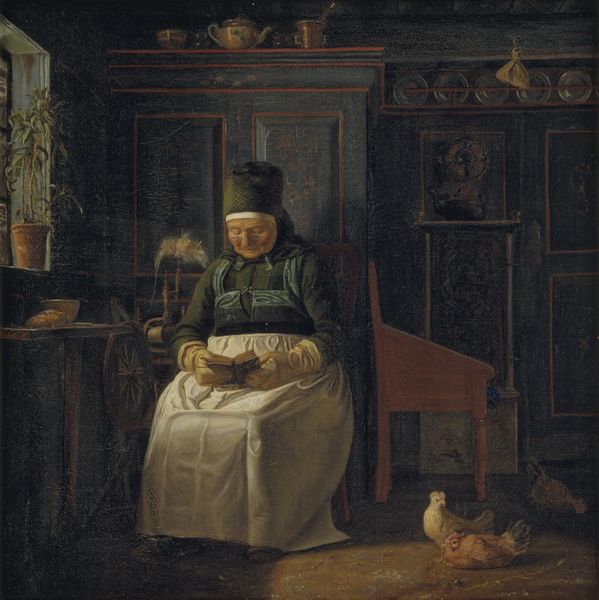
painting, oil-paint, oil-on-canvas
#
portrait
#
painting
#
oil-paint
#
france
#
painting painterly
#
genre-painting
#
academic-art
#
oil-on-canvas
#
realism
Dimensions: 17 1/2 × 13 in. (44.5 × 33 cm)
Copyright: Public Domain
Curator: Let’s take a look at François Bonvin's "Up from the Cellar," painted in 1857. Editor: There's a quiet solemnity to it. The earth tones—browns, tans, off-whites—create this very subdued mood, almost like a scene from a stage play about peasant life. Curator: It's fascinating to consider this work in light of the Realist movement brewing in France at that time. Bonvin was part of that shift, aiming to portray the lives of ordinary people with unflinching honesty, pushing against the grand narratives often seen in art. Editor: Precisely! Note the subtle gradation of light and shadow, particularly how it defines the woman's form as she emerges from the dark doorway. It's a sophisticated use of chiaroscuro to direct the viewer's eye, lending weight and solidity to her figure. The composition directs us, doesn't it, away from narrative drama. Curator: Absolutely. And it's not just about accurate depiction; it's about celebrating the dignity of labor, specifically of working-class women. She’s not romanticized; she's presented with a sense of self-possession. Editor: Yet the textures and forms almost transform her into just another still life, really—the earthen jug, her apron, her modest dress and head covering, and that heavy bucket that adds a subtle sense of gravity to the composition... It's less portraiture and more a study of forms caught in ambient light. Curator: I’d push back gently there, noting how the painting highlights the lack of power and opportunities available to working women. What choices were available to women like her, right? We can analyze that and reflect on what things have changed since this work was first created. Editor: Point taken. But, ultimately, this painting exists on its own plane of aesthetic construction... a series of formal relations meant to stir something resonant within us beyond the historical particulars. Curator: Agreed—Bonvin compels us to confront these themes head-on by humanizing her. I’m especially fascinated by his ability to capture the subtle emotional tone, given the restrictive norms of representation. Editor: A captivating exploration of form and context! I hadn't really seen it from this angle before; it is good food for thought.
Comments
minneapolisinstituteofart almost 2 years ago
⋮
François Bonvin’s paintings, drawings, and prints often depicted women doing chores. We see them pouring water from pitchers, cutting bread for the family meal, ironing, or, as in this painting, fetching a container of wine. The setting is likely one Bonvin knew by heart: the background resembles the inn owned by his father in Vaugirard, just outside Paris. A dedicated realist, Bonvin found his models in the world around him. Picturing the small, routine moments of workaday life was not unusual among nineteenth-century artists, linking them to their Dutch forebears in the 1600s, who likewise favored heightened realism and themes of familiar daily activity.
Join the conversation
Join millions of artists and users on Artera today and experience the ultimate creative platform.
